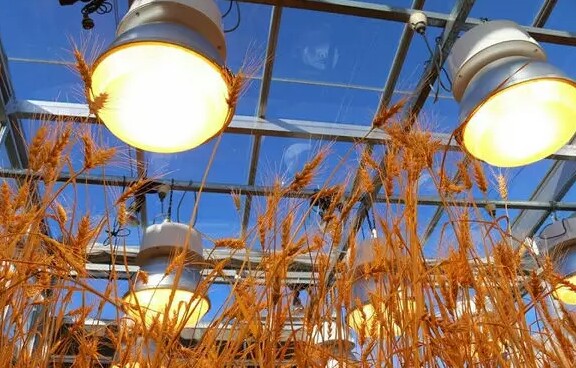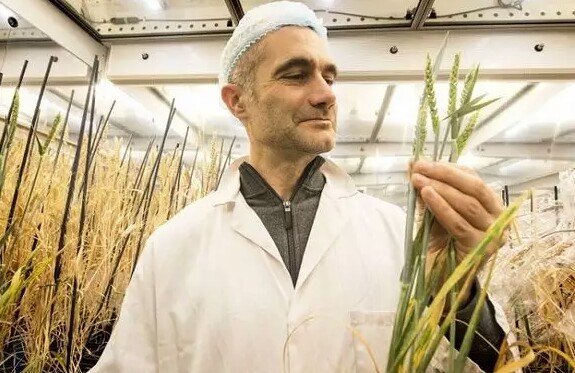Inspired by NASA, scientists have found ways to triple wheat output
It is estimated that 20 billion people will be added to our planet by 2050. However, the available arable land on Earth does not grow. How can we solve the problem of adequate food and clothing for such a huge population? Scientists look for decisions from all angles, including the invention of heat-resistant dairy cows, vertical farms and hamburgers grown in laboratories. Now, researchers report a NASA-inspired breakthrough called "Accelerated Cultivation." The breakthrough is based on a strong lighting system that allows crops to grow several times faster and at the same time enhance the health of the crop.
The technology was developed by researchers from the University of Sydney, the University of Queensland and the John Inners Center based on experimental research from NASA. More than a decade ago, NASA used the technology in space missions as a way to produce food. Crops that were originally planted on Earth's land were moved into glass houses and the photosynthesis of crops was enhanced under the constant illumination of low-cost LED lights through special wavelengths.
Lee Hickey, a researcher at the University of Queensland and co-author of the study, said that "far-infrared spectroscopy is extremely important for enhancing the reproductive growth of crops and the intensity of light is also important for the robust growth of plants."
With this carefully crafted lighting device, the team harvested six generations of wheat, chickpea and barley and four generations of rapeseed in one year, in sharp contrast to the two or three generations of greenhouses in the field . Research shows that this also applies to peanuts, amaranth and lentils and is expected to be applied to sunflowers, peppers and radishes.
"At the moment, we are using high-pressure sodium vapor lamps in greenhouses, which cost a lot of electricity, and in the research we showed that wheat and barley can be planted at a density of about 900 per square meter," said Hickey, Lamp system, this shows an exciting opportunity - the technology can be used in the field of industry, expanding the scale of operation. "
Hickey claims that this accelerated cultivation technique not only has the potential to increase crop yields but also results in higher quality. The team compared the characteristics of these plants with that of plants grown under conventional greenhouse conditions, such as the number of new shoots and grains per panicle, and found that plants that grew rapidly were always better. In the past, it was already possible to speed up the cultivation of plants, but it was not easy to produce genuine, healthy samples.
Dr. Brande Wulff of the John Innes Research Center said: "People say that it is possible to cycle quickly, but the plants grown in this way appear to be weak and produce only a small amount of seeds, but in fact, Plants produced by the new technology are more spiritual and healthier than those grown under standard conditions, and one of our colleagues was incredible when they first saw the results. "
Accelerating the growth of plants over several generations may have implications for the next test and development of more climate-resilient and more resilient genetic combinations. Although accelerated technology does not currently include GM technology, the team said there's huge potential for combining the two.
Hickey said: "Accelerated cultivation is a 'non-GMO' technology used to accelerate the development of crops, which is good news for crops that are not GMO-friendly, but we show in our research that GM And to speed up the cultivation of technologies.I believe that the greatest achievement of accelerated cultivation techniques will be the successful integration with other plant breeding technologies such as genomics and gene editing technology (CRISPR). "
At the same time as the extensive testing in the laboratory, the technology has drawn the interest of the business. For example, Dow AgroSciences, an Australian company, has used accelerated growth techniques to develop new wheat varieties to enhance their resistance to spike germination.
Wulff said, "I believe you will be able to walk into the field ten years from now and point out the different types and attributes of plants that have been developed using the technology."
This research has been published in the journal Nature Plant. The researchers claim that this accelerated cultivation technique not only has the potential to increase crop yields but also results in higher quality.
The researchers claim that this accelerated cultivation technique not only has the potential to increase crop yields but also results in higher quality.
Accelerated cultivation techniques were developed by scientists from the University of Sydney, the University of Queensland and the John Innes Research Center.
It is estimated that 20 billion people will be added to our planet by 2050.
Hello @wdtr, upv0t3
This is a free service for new steemit users, to support them and motivate them to continue generating valuable content for the community.
<3 This is a heart, or an ice cream, you choose.
:)
R4ND0M:
9677 4658 1117 2310
5090 6260 9875 8892
7512 6141 5668 2921
8267 4805 7585 9434
Congratulations @wdtr! You received a personal award!
Click here to view your Board
Congratulations @wdtr! You received a personal award!
You can view your badges on your Steem Board and compare to others on the Steem Ranking
Vote for @Steemitboard as a witness to get one more award and increased upvotes!